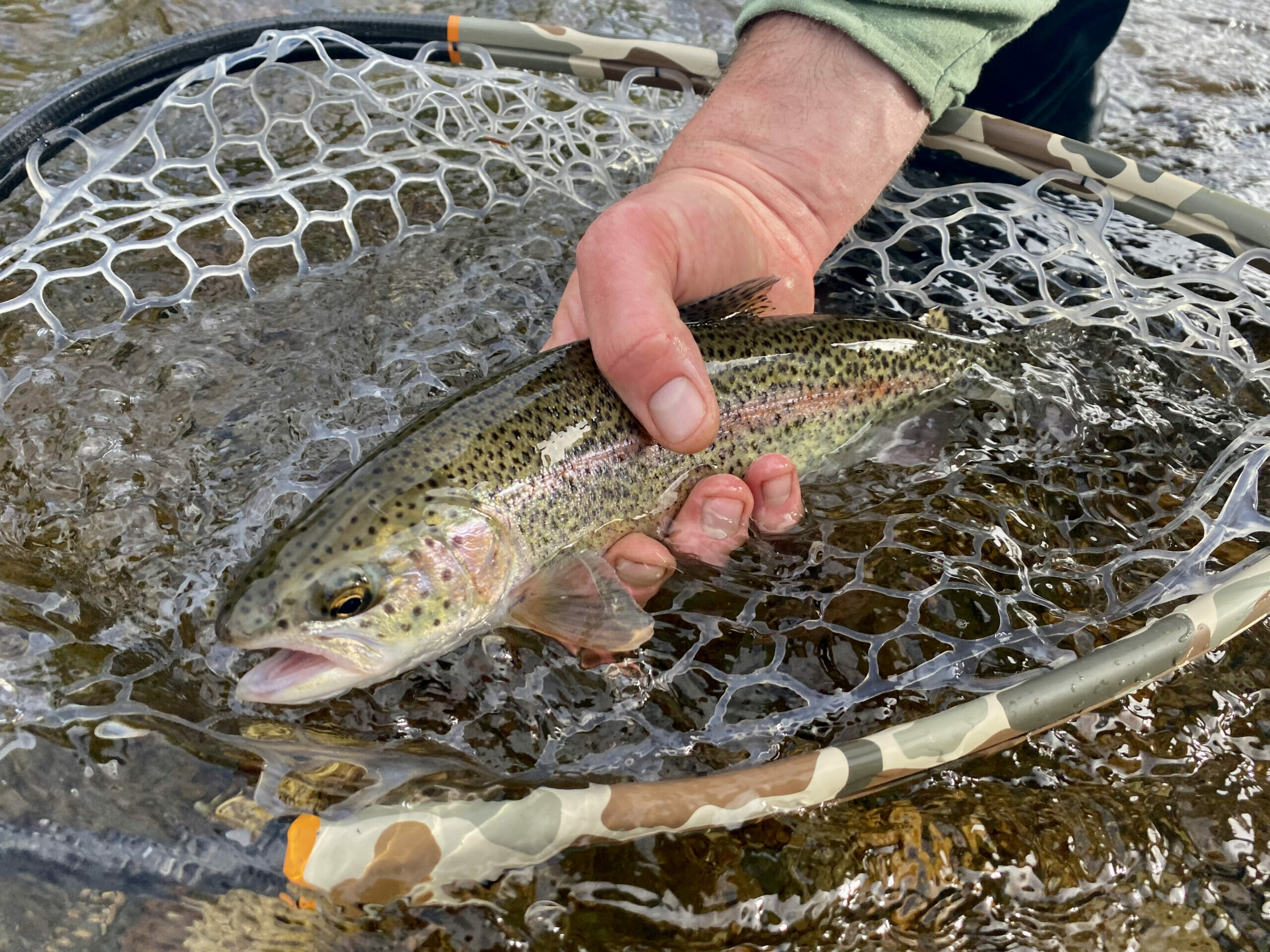Alaskan Rainbow Trout (Oncorhynchus mykiss)
Species Summary and Status: The rainbow trout native to Alaska is also known as coastal rainbow trout (Behnke 2002). There are two forms of coastal rainbow trout native to Alaska: the freshwater resident form and the searun form more commonly called steelhead. For the purposes here, only the resident form is discussed.
Alaska’s rainbow trout populations are still largely intact and robust, largely because of remote locations with limited accessibility, abundant and pristine habitat, and conservative management. The state of Alaska manages coastal rainbow trout following principles outlined in the state Wild Trout Management Policy. This policy recognizes that Alaska’s wild trout and their ecosystems are important to the quality of life and economy of Alaska and the state has long recognized the value of these fish in management decisions. Wild trout stocks are managed conservatively and for optimal sustained yield based on management objectives that maximize benefits of the fisheries while maintaining genetic diversity, biologically desirable size composition, and abundance levels that do not require stocking to supplement the wild stocks.
Rainbow trout are native to waters throughout Southeast Alaska west to Kuskokwim Bay, and as far up the Kuskokwim River as Sleetmute. The clearwater lakes and streams draining into Bristol Bay provide outstanding habitat. Rainbow trout occur naturally on the Kenai Peninsula, throughout the fresh waters of Upper Cook Inlet, on Kodiak Island, and in the Copper River drainage. Release of hatchery-reared rainbow trout outside of their native range has occurred in specific lakes and streams in the Tanana River drainage near Fairbanks, Kenai Peninsula, Kodiak Road System, Matanuska Susitna Valley, Prince William Sound, Resurrection Bay, Anchorage Bowl Sub-District, Chugiak/Eagle River Sub-District, Elmendorf Air Force Base Sub-District, Fort Richardson Army Base Sub-District, and the Turnagain Arm Sub-District.
Within a year or so of hatching the stream resident form of rainbow trout possess the well-known streamlined salmonid form, though body shape and coloration vary widely and reflect habitat, age, sex and degree of maturity. The body shape may range from slender to thick. The back may shade from blue-green to olive. There is a reddish-pink band along each side about the midline that may range from faint to radiant. The lower sides are usually silver, fading to pure white beneath. Small black spots are present over the back above the lateral line, as well as on the upper fins and tail. In some locations, the black spots of adults may extend well below the lateral line and even cover the entire lower side. River or stream residents normally display the most intense pink stripe coloration and heaviest spotting followed by rainbows from lake and lake-stream systems. Spawning trout are characterized by generally darker coloration.
Looking Forward: Wild populations of rainbow trout in Alaska are generally believed to be healthy with only a few specific areas where fisheries managers are concerned. This is not the case elsewhere as both native rainbow and steelhead trout are considered threatened or endangered throughout most of their native range. The way to maintain healthy populations of trout in Alaska is to ensure their habitat is preserved.
The biggest threat to rainbow and steelhead trout in Alaska is the degradation of their native habitat caused by human interactions and development including: urbanization, roads, hydroelectric projects, timber harvest, mining projects, and loss of wetlands.
In southeast Alaska, scientists and stakeholders in the region have identified over 70 areas within the Tongass National Forest that are of significant importance to salmon and trout populations. The rivers and streams that make up these areas are currently open for development activities that could negatively impact salmon and trout habitat. Because they are so important to salmon and trout, work is being done to permanently conserve these key areas and the economic gain they bring to the region. These waterways have been named The Tongas 77.
To do so, members of Congress in Alaska and the Pacific Northwest have introduced legislation that will permanently make these areas off-limits to harmful development activities while still allowing existing access and uses. The commercial and sport fisheries rely on healthy Tongass watersheds.
In addition, illegal stocking of northern pike is reducing the quality of fishing in Southcentral Alaska. The northern pike is native to most of Alaska, but it does not naturally occur south and east of the Alaska Mountain Range except for a small, remnant population near Yakutat. Pike are top level predators in aquatic food chains and are highly piscivorous. In Southcentral Alaska, illegally-introduced pike can change the balance of an aquatic ecosystem by preying on native fish while having few predators of their own. Some lakes and streams that once supported healthy numbers of fish, including rainbow trout now have only small northern pike. Illegally-stocked northern pike continue to threaten wild and stocked fisheries in Southcentral Alaska.
All Data Compiled From:
Alaska Department of Fish and Game



